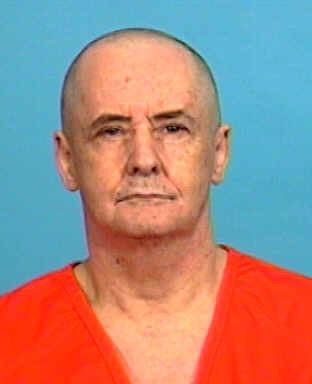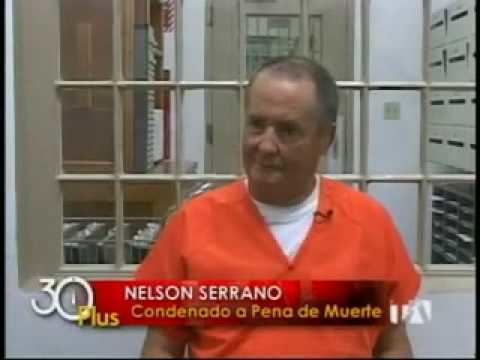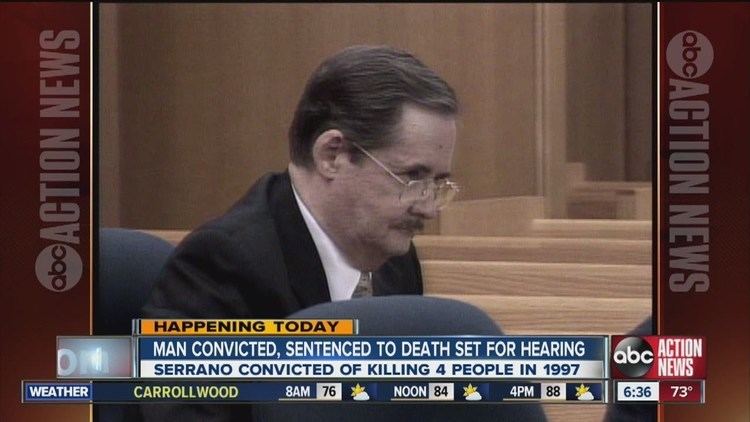Occupation Businessman Name Nelson Serrano | ||
 | ||
Conviction(s) Murder in the first degree (four counts) | ||
Criminal penalty Capital punishment | ||
Nelson serrano 09 part 1
Nelson Iván Serrano Sáenz (born September 15, 1938) is a former Ecuadorian businessman and a naturalized American citizen (since 1971) who was convicted of murdering Frank Dosso, Diane Patisso, George Patisso, and George Gonsalves in the town of Bartow, Polk County, Florida, on December 3, 1997. The jury pronounced him guilty and recommended the death penalty for Serrano in October 2006 after he was convicted of the murders. On June 26, 2007, Judge Susan Roberts sentenced him to death by lethal injection for each of these crimes.
Contents

Nelson serrano 09 part 3
Background

On December 3, 1997, Frank Dosso, Diane Patisso, George Patisso, and George Gonsalves were found shot execution-style at the Erie Manufacturing plant in Bartow. Diane Patisso, a young state prosecutor, had gone to pick up her brother Frank and her husband George at the factory that evening, and prosecutors say she was murdered to prevent her from identifying the killer.

Although there was no clear physical evidence at the scene to link anyone to the crime, relatives of the victims immediately suspected Nelson Serrano, a former partner and CEO in the business, who had been in a bitter dispute with the others over the removal of $1 million by his partners without his knowledge. Dosso and Gonsalves accused Serrano of graft, then theft but investigators, including the FBI, dismissed these accusations. However, millions of dollars were removed from corporate bank accounts after Serrano left the company and only Dosso and Gonsalves had access to them. The whereabouts of this money was never presented during trial and remains unknown.

There were disagreements about the distribution of assets and accusations by Serrano that there were two sets of books. During the summer of 1997, Nelson Serrano opened a separate business checking account with a different bank and deposited two checks totaling over $200,000 from Erie's sister company Garment Conveyor Systems, as requested by corporate counsel to keep monies safe from Dosso and Gonsalves. Serrano instituted a civil suit against his partners. Ultimately, Serrano was removed as president by a vote of the other two partners and Serrano left the companies. Thereafter, the locks were changed on the building. Shortly before Serrano was ousted as CEO, Phil Dosso and George Gonsalves had fired Serrano’s son, Francisco. Prosecutors said Serrano was angry because Gonsalves and Felice "Phil" Dosso, the third partner in the business, had ousted him and his son from both companies.

Numerous Erie employees testified to the strained relations between Serrano and the other two partners, particularly Serrano‘s dislike of Gonsalves. Serrano made statements indicating that he wished Gonsalves were deceased. Another Erie employee testified to the time, weeks before the murders, that a plant employee came to work with a gun and threatened to kill George. He was calmed down and sent home.
Authorities said both Serrano men had motive to commit the murders, but Francisco Serrano provided an alibi. His father told authorities he was in an Atlanta hotel room with a migraine headache all day, so no one saw him or talked to him. But, almost three years later, law enforcement agents found his fingerprint on a parking garage receipt at Orlando International Airport dated 3:49 p.m. on Dec. 3, about two hours before the slayings occurred. Prosecutors felt that piece of evidence broke his alibi. However, the state's own fingerprint expert stated the fingerprint was suspicious because of how it was found, because the print was from Serrano's right hand (a driver is more likely to take the ticket from the machine with his left hand), and because there were no other prints or smudges on the ticket.
Prosecutors have admitted, in a court hearing in September 2013, to withholding from defense counsel the testimony of the only eyewitness to the murder scene, John Purvis. Purvis stated that he witnessed an Asian young man ("one of those slanty eyed people") between the ages of 25-30 outside of the main entrance to Erie and a Latin young man in the building looking out of the glass at or around the time investigators estimate the murders occurred. The victims were found in an office about 50 feet away from the main entrance, suggesting that others were also involved. He also stated that a Lincoln or Cadillac was parked outside. The new attorneys for Serrano headed by attorney Roy Black have also uncovered that prosecutors withheld from trial defense attorneys the fact that an extradition process had already begun one week prior to Serrano's illegal deportation and, furthermore, state attorney Paul Wallace traveled to Ecuador, misled government officials to seek deportation obstructing the federal process of extradition. Paul Wallace, as co-prosecutor during the trial, withheld from the court and the jury this information.
Serrano claimed that he was on a business trip, 500 miles away in Atlanta, when the killings occurred. However, the prosecutors convinced the 12-member trial jury that Serrano had flown by airliner to Florida under assumed names to commit the premeditated murders, and then he had quickly flown back to Atlanta from a different major airport, in order to attempt to establish an alibi by appearing on the security video cameras of his hotel. Prosecutors stated that Serrano had tricked his nephew into providing him with a rental car (under a pseudonym) to reach the other airport. Although Bartow is midway between the major airports in Tampa and Orlando, evidence was not shown to positively prove this trip and murders could be possible during rush hour traffic. Prosecutors and investigators did not find any videos from either airport showing Serrano.
During the trial, Serrano's lawyers fought for a mistrial, claiming that Serrano was illegally deported from Ecuador to the United States. Serrano is an Ecuadorian citizen by birth and a naturalized American citizen (in 1971). At the time in 1971, he had to renounce his Ecuadorian citizenship in order to obtain his United States citizenship. Serrano was kidnapped in Ecuador by Florida-hired off-duty police officers and then, according to the Ecuadorian government and the Inter-American Commission on Human Rights (a division of the Organization of American States), illegally deported back to Florida for his murder trial. Documents concerning this issue were presented during trial and were confirmed by the Ecuadorian Ombudsman through his testimony. Judge Roberts, who was not aware that an extradition process was started and thwarted by state attorney Wallace, denied the defense motion, finding no cause to dismiss the case.
Ecuadorian officials, seeking his return to that country, claimed Serrano had been beaten and kept in a dog kennel at the airport in Quito after his arrest in Ecuador. Police say Serrano received a minor injury from a fall as he boarded the airliner. An American Airlines flight attendant who witnessed Serrano was bleeding from the head with several bruises refused entry to the Florida officials but the flight Captain allowed them to board.
Judge Roberts denied a defense motion for a change of venue although one of the victims, Diane Dosso Patisso, was an Assistant State Attorney for Polk County. The judge hid this information from the jury.
The families of the victims have set up a memorial foundation in their honor.
Serrano's son, who had also worked at the Bartow plant, claims that his father is innocent, and he has set up a web site in defense of his father.
Serrano is on death row at a male-only maximum security facility at the Union Correctional Institution in Raiford, Florida. convicted of four counts of premeditated murder, awaiting four administrations of death by lethal injection.
